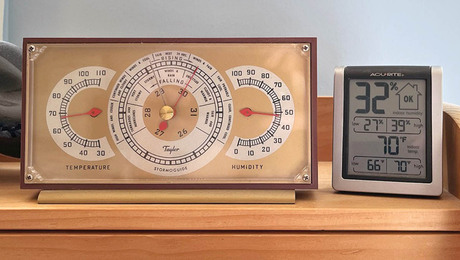First time posting over here, but I thought this would be a good place to start. My wife and I just purschased a new home with a 2 1/2 car detached garage. I plan on putting my shop on the second floor. I am a hobbyist woodworker who would like a comfortable place to work.
We would like to insulate, heat, and cool the garage. The cooloing part is for the shop. There is power already supplied to the garage. I was thinking of putting a wall mounted A/C unit in the upstairs shop. However I’m not to sure how to heat the garage. My concern is the shop, but my wife wants the whole garage heated.
We will be insulating and drywalling the whole garage.
My question is what kind of heat source should we use. And will a wall mounted a/c unit be sufficient. We live in the Chicagoland area, so there is always the potetial for cold winters and warm summers.
Thanks Steve C


















Replies
You can get 2 ton (and maybe larger) through the wall AC so that you should be able to cool the shop.
You did not indicate what fuels you have so I am assuming natural gas.
For the garage you can use ceiling hung "utility" heaters. Hot Dawg is one brand, but there are many others.
For the shop you can use the uility heater or a direct vent one would work fine.
Or for eithr place you can get infra-red linear gas heaters. They do require a full 8ft of height. They are good for heating the equipment rahter than the air.
One other item to consider is humidy control during the winter months. If you drive a car full of frozen slush and snow it will all melt off in a heated garge. A floor drain is a must. Also a humidistat controling an exhaust fan. You will be amazed how moist your garage can get. The water vapor will condense on any cool surfaces. Mount the fan up high and provide an air intake down low. Preferably opposite each other. You could probably leave a 4" to 6" diameter air intake open all winter and close it off in the summer. This will provide for makeup air for the heater as well. I assume that the garage doors are insulated and have good floor and jamb seals in place. Roger
Thanks for the reply. The garage doors are insulated and have 4 windows, 2 lower level and 2 on the upper level where my shop will be. Will it be sufficient to keep a window cracked open as opposed to a fan.
Steve
Steve, you could certainly start out with an open window. The only problem is that you may be exchanging more air than you need too, thus running up your heating bill. A fan on a humidistat is a liitle more automatic. Your windows will be a good humidity indicator, if they are condensing moisture your RH is too high. That said or course if you pull a sloppy wet car in the garage there will be some moisture on the windows, however if your system is working right things should be dried up in about 8 hours. Roger
What energy sources are available? If everything is to be done with electricity, a heat pump would work, but with the cold Winters in your area you'd have to have a backup source of energy which would add cost.
If it were me, I'd go with the wall mount AC for Summer and some electric baseboards for Winter.
FYI, cars corrode faster in heated garages. The heat accelerates the effect of salt.
I like the suggestion for humidity control. Consider a dehumidifier.
Scott.
Always remember those first immortal words that Adam said to Eve, “You’d better stand back, I don’t know how big this thing’s going to get.”
How about just installing a little high efficiency forced air furnace with a cooling coil in it. Route some duct work where you want it and you're all set.
If you don't want to spend money on a new furnace, you can get good used ones for nothing basically. I still would use the a/c unit in the furnace instead of hanging some noisy troublesome thing out the window.
For a/c only, you may consider a ductless unit.
A small woodstove would easily heat that space and get rid of your scraps.
Your garage will stay above freezing most of the time anyway without any heating if it is well insulated. Treat it just like a small house.
Be cautious here most building codes and insurance companies will not permit a woodstove in a garage. Also furnaces that have an open flame below 18" AFF are not permitted in a garage either. Roger
I would not put any unit in the garage, I would put it upstairs in the shop. I built two shops like this in the last few months. I am working in one now finishing out the interior. It is nicer than most peoples homes!
Around here a Vermont Castings stove is almost mandatory!
You make good points tho.....